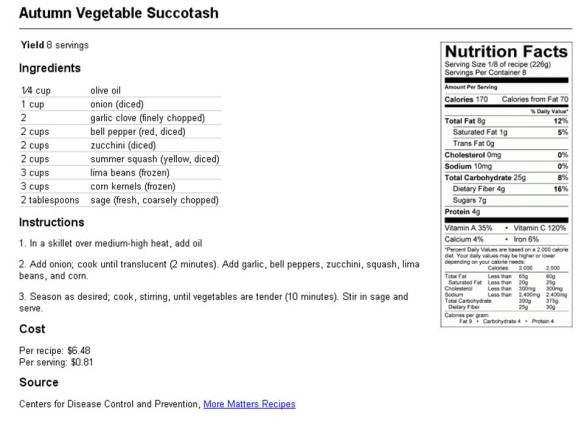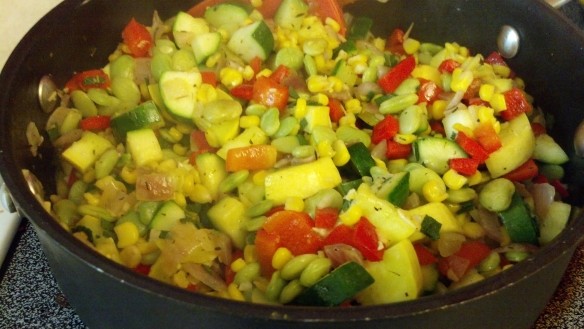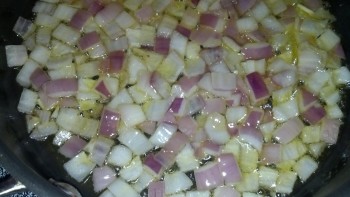This blog has been an important part of our lives for the last year. I have had a great time sharing recipes, race reports and general nutrition-related thoughts, and Chad has had a life-altering experience, sharing his weight loss with all of you; it gave him inspiration and support and you all played a part in his success.
Now comes a new phase. I was thinking about what I can bring to this blog next, and a couple issues kept coming up. Talking to my patients, friends and family, I find that despite all the complex issues that we sometimes get lost in (processed food, vitamins, fad diets, artificial sweeteners, etc.,) people are still mainly looking for healthy recipes they can afford to feed their families. The second issue is the SNAP program. This national program, the Supplemental Nutrition Assistance Program, helps families who earn somewhere around $2000 or less per month receive some type of assistance for food. I would like to note that I consider the process of figuring benefits pretty complicated, and if anyone would like to check out how much a family of a certain size would receive, check out the SNAP Eligibility page. Aside from the main purpose of the SNAP “dollars” that families receive, there are other parts of the SNAP program that often get ignored, such as education that is provided to children and families across the country. One other tool that I feel is generally unknown is the online SNAP Recipe Finder. This online recipe database has, at last count, 589 recipes that are chosen for their healthfulness and affordability. So, if healthy foods that are affordable and easy to prepare are what the general public is really looking for in food and nutrition, why is this website not bookmarked in EVERY computer, tablet and smartphone in America!? (Though I have not done an exhaustive search, there has been not one single person I have mentioned this website to who already knew about it!)
Just when an idea about using SNAP recipes in our house, and therefore on our blog, was forming in my mind, the government shut down. While I WILL keep politics OUT off this blog, the bottom line was that when I went to recommend this website to parents who were looking for healthy meal ideas, they couldn’t even get to this website…it was shut down, too! But now it’s back, and I’m taking that as a sign to forge ahead with my idea:
I will sample SNAP recipes that are found free online, and report back what I find.
I may also share some tips about the website and information about the SNAP program, which is part of the farm bill, a VERY large piece of legislation, of which nutrition is only a small part. This should be fun, and hopefully, interesting and informative as well!
So, where to begin? Since we are having our first cold “snap” of the fall here in Wisconsin, and “A” seems to be a logical place to start, the first SNAP recipe I made was “Autumn Vegetable Succotash.” If you follow the link, this is what you would see:
Please note the super-cool features:
- The recipe is pretty simple, making it less intimidating for the newbie cooks, since cooking at home is generally healthier than take-out…great for the ones who never learned to cook.
- It gives you the estimated cost! I think this is brilliant, since you can start comparing what you might pay for a restaurant meal with the recipe’s total, and even per serving prices! This will vary from place to place and season to season, of course. Also, if you already have some of the ingredients, there is less “out-of-pocket” costs, so to speak. (For these reasons, I won’t normally try and estimate my costs.)
- It gives you the source of the recipe. Because this is a database, it does draw recipes from several sources. Citing the source can help you find even more recipes like the one you are enjoying, and it can also be just plain interesting to see where they get the great variety of recipes they have.
- Nutritional label. Hello, I’m a dietitian, so I think this is the best part, and what really makes the site for me! Whether you are looking at calories or a nutrient like sodium or calcium, you can see for yourself what is actually in the recipe. (If only ALL website and cooking magazines did this.)
I made this recipe today, and here are my thoughts:
Ingredient and Preparation Notes:
- I used red onion, and about half of a large one gave me the 1 cup.
- I used 3 cloves of garlic, since we ALWAYS use extra garlic!
- It took about 1.5 fresh red bell peppers for 2 cups.
- For the zucchini and squash, it took just 1.5 pretty small ones of each.
- I still had fresh sage in the herb garden, but if I hadn’t, I would have used half the amount of dried.
- It says to use a skillet, but it better be a BIG one! I used a saucier, like a skillet but deep, and it was pretty full! You might want to use a pot…it will just get messy if things start spilling over when you stir.
- When it says “Season” in step 3, I used 1 t dried thyme, 1 t salt and 1/4 t pepper. More on seasoning in a bit.
- This yielded about 8 cups which would work to be 1 cup per serving.
- The chopping of the vegetables took more time than the rest of the recipe, but after that was done, it went super-fast!
Thoughts and Variations:
- A succotash is traditionally corn and Lima beans, and often is made with other veggies as well. Using the frozen corn and beans as a base, you could mix in almost any veggies and get this to work out great, and since we can keep those in the freezer for a while, you could never say there wasn’t a tasty vegetable dish in the house!
- In addition to the frozen corn and peas, they now also sell bulk, pre-diced onion, peppers and even zucchini and squash (separately or together) at some grocery stores. This might affect the texture of some of the vegetables, but may also bring the cost down even more!
- When it comes to seasoning, you could pretty much go with any flavor profile, though you might want to lose the sage if you go with Mexican spices! To follow the recipe, I kept the sage, but I also know I like thyme with sage, so threw some dried in. Basil and/or oregano would also work. If you are using dried, I would use them at the start of step three, but fresh should be added later, like the sage.
- If you are watching sodium, you could use Mrs. Dash instead of any salt, or just punch up the flavor by using more of the other seasonings.
- I like my veggies with a bit of crunch, so removed them from the heat right at the 10 minute mark, after checking to see the Lima beans were heated through.
- I was yummy! It was colorful! It was healthy! (Notice the 4 g of protein and 4 g of fiber.) My only critique was that it was almost too oily. I might use half the oil, just making sure the veggies don’t get too dry. That would also save 30 calories per serving.

- As I was cooking the veggies, I thought that this might be easily made into an entree by serving it as part of a pasta sauce, or even mixed with wild rice as a type of vegetable pilaf, since I have always liked thyme and sage with my wild rice.
After a successful first try, I am excited to choose the next recipe! If you would like to request one for my to try, please do so, and I also hope you’ll try some for yourself!




